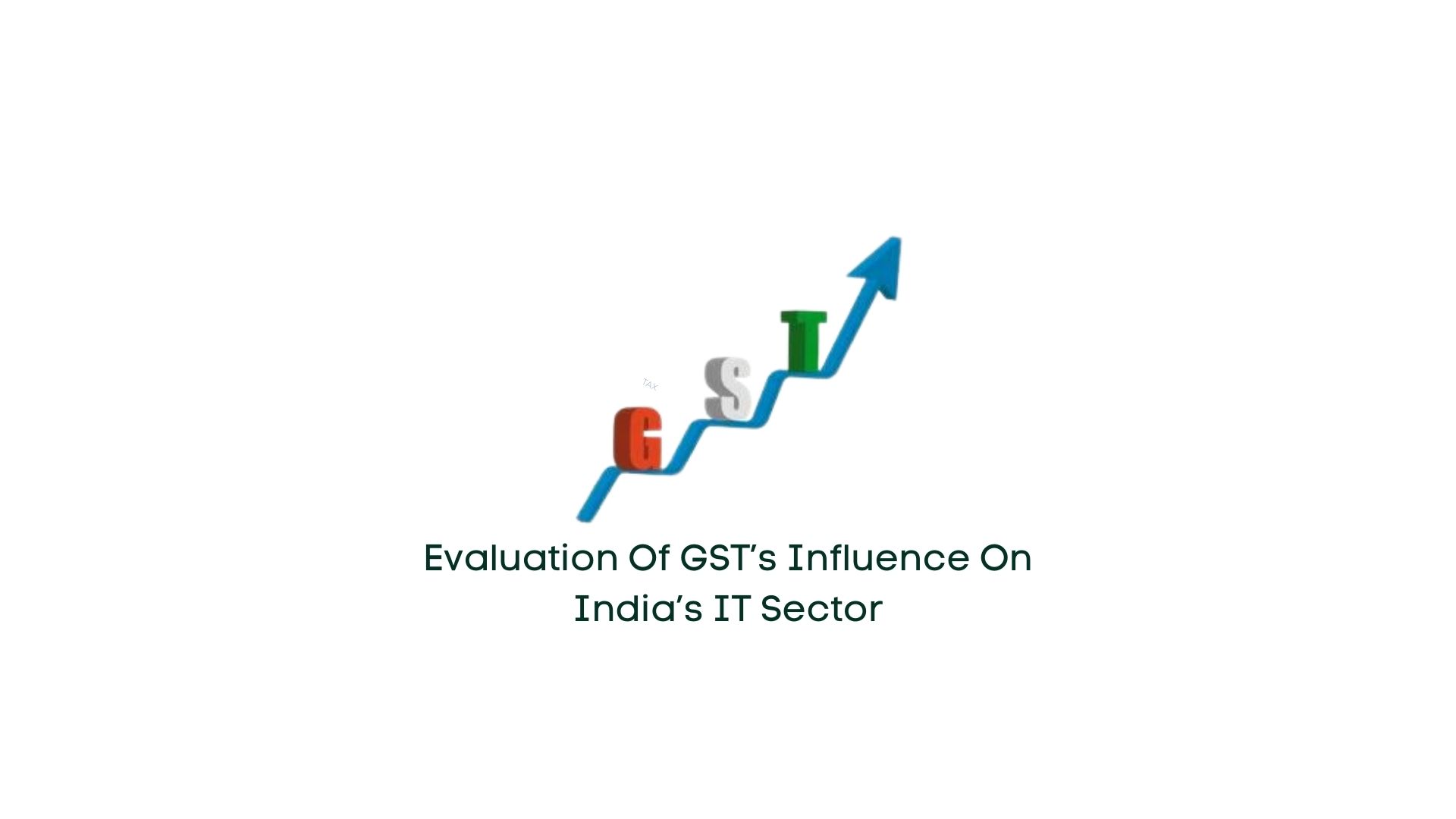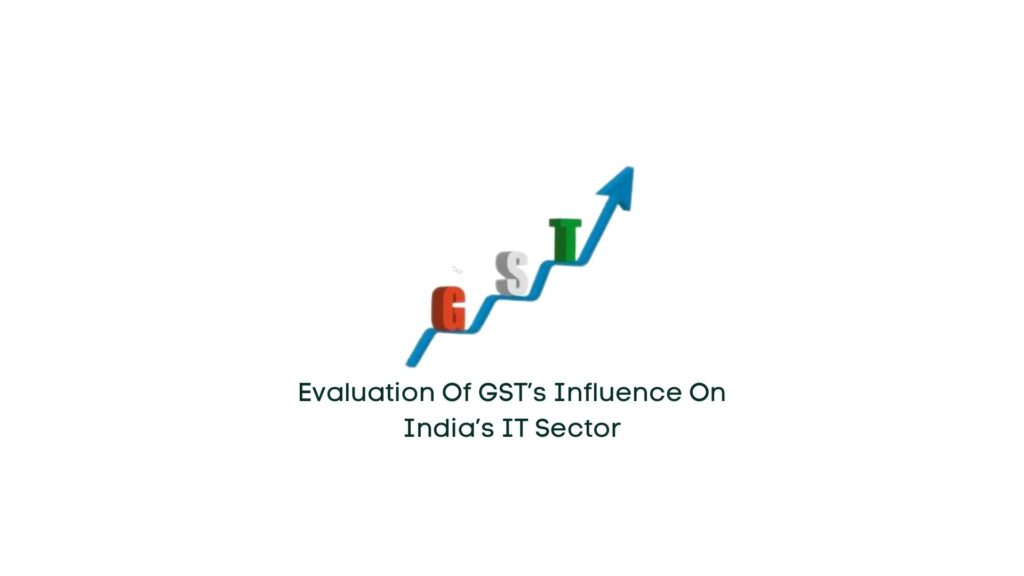
28 Feb Evaluation of GST’s Influence on India’s IT Sector

The IT sector in India has undergone substantial transformation with the introduction of the Goods and Services Tax (GST) regime. Prior to GST, the taxation system in India was convoluted, burdened with multiple taxes, intricate compliance requirements, and tax cascading issues. However, with the implementation of GST, the tax landscape underwent simplification, particularly benefiting the IT industry.
The GST framework, characterized by a dual structure comprising Central GST and State GST at each stage of the supply chain, aimed at streamlining taxation processes. Notably, most Information Technology services are categorized under the 18% slab rate.
Understanding GST:
GST, an acronym for Goods and Services Tax, represents an indirect tax overhaul designed to replace various state and central taxes with a unified tax structure. This transition from multiple taxes to a single tax aims to rationalize the indirect tax system, fostering a conducive economic environment for growth and development across sectors.
Impact of GST on the IT Sector:
Registration: Post-GST implementation, all traders are mandated to register in each state where they conduct business. Unlike the previous tax regime, where service providers were registered under the Central Service Tax department, the GST era necessitates separate registrations for each location, posing operational challenges, particularly for large multinational IT service providers.
Tax Rates in the IT Industry: Under the previous tax system, the cumulative indirect tax rate ranged from 20 to 25%, encompassing excise duty, VAT, service tax, etc. With GST, the tax rate reduced to 18%, potentially lowering the cost of IT products, although IT services may incur relatively higher rates.
Input Tax Credit (ITC): GST allows businesses to offset infrastructure and overhead costs through ITC benefits. Unlike the old regime, where traders couldn’t claim service tax paid on Annual Maintenance Service (AMC) contracts, GST enables ITC claims, mitigating tax liabilities.
Software Adaptation: The transition to GST necessitated the redesign and updating of ERP software to comply with new taxation rules. Companies are investing in upgrading their ERP systems and accounting software to accommodate GST complexities, either through software upgrades or by adopting specific GST-compliant software solutions.
Demand for GST Software: The implementation of GST has spurred a demand for GST-compliant software solutions. This increased demand presents a lucrative opportunity for software developers, stimulating growth in the IT sector.
Elimination of Tax Cascading: GST eliminates the cascading effect of taxes prevalent in the previous taxation system, allowing both IT service providers and clients to claim tax credits, thereby optimizing tax efficiencies.
Export of Services:
India, being a major exporter of IT services, benefits from GST’s zero-rated export provisions. Input taxes paid are eligible for refunds, provided certain conditions are met. Additionally, the default rule for determining the place of supply enhances clarity for exporters.
Conclusion:
While GST has introduced an increased tax rate of 18% for most IT services, it is poised to yield long-term benefits for the sector. Features such as input tax credit, zero GST on exports, and the elimination of tax cascading are expected to reduce costs and enhance the overall competitiveness of India’s IT industry in the global market.
- It contained information on both external and internal assets generated or acquired during the relevant financial year under various tax categories such as CGST, SGST & IGST, and HSN codes.
- It aggregated all monthly/quarterly annual returns (GSTR-1, GSTR-2A, and GSTR-3B) filed for that year. Despite its complexity, this reimbursement contributed to comprehensive and transparent data recovery.


No Comments